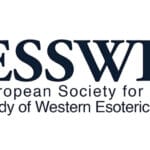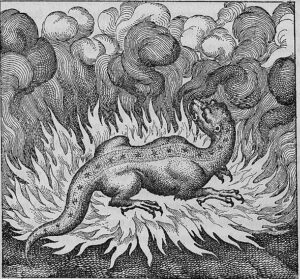
 Envoys of the Macrocosm: Elemental Beings & the Relationship Between Humans & the
Envoys of the Macrocosm: Elemental Beings & the Relationship Between Humans & theA lot of headway has been made in the field of ecological history when it comes to appraising the relationship between humanity and the natural world in the early modern period. By looking at historical themes such as the development of early-modern botany or the research programme of Francis Bacon (1561–1626), it has generated insights in the trajectory of our impact on our ‘nonhuman’ surroundings. What deserves more attention are other attempts at comprehending (humankind’s relationship to) nature and its phenomena. There is some scholarship which draws connections between ecological themes and elementals (ex. Anke Kramer, 2017), but this current contribution aims at a wide set of primary sources including works by later Paracelsians, mythographical compendia and magical manuscripts, which is well-suited to account for shifts in approach, attitude and use of the concept of elementals in ways relevant to the aforementioned relationship. In addition, the project aims to tease out the implications these insights hold for current debates in the history and philosophy of ecology and esotericism.
The concept of elementals is first proposed as a fourfold system by the physician, alchemist, philosopher and lay theologian Paracelsus (1493–1541). Besides some alternative names and miscellaneous creatures, the main beings are undines (water), sylphs (air), gnomes (earth) and salamanders (fire). While these beings have their origins in Greco-Roman mythology, local folklore and medieval alchemy, Paracelsus is the first to synthesise them together and incorporate them all into a coherent cosmology. The oeuvre of Paracelsus itself is peppered with overt and implicit references to them and features one dedicated treatise, called the Liber de nymphis, sylphis, pygmaeis et salamandris et de caeteris spiritibus (Book on Nymphs, Sylphs, Gnomes and Salamanders and the Other Spirits, pub. 1566). Aside from an (inter)textual analysis of these sources, this material as a whole will be contextualised by investigating how it is situated in the philosophical and religious climate of the period, looking at other authors such as Marsilio Ficino (1433–99) and Heinrich Cornelius Agrippa (1486–1535).
The second major component of the project is reception. This ranges from the first forgeries attributed to Paracelsus and the commentaries and original works of the early Paracelsians such as Gerhard Dorn (1430–84) to material written by Rosicrucian authors during the Thirty Years’ War (1618–48) and folkloric compendia and magical texts of the late seventeenth century. The end of the temporal range of the project is represented by an analysis of the early ‘fictionalisation’ of elementals, spearheaded by Henri de Montfaucon de Villars’s (c. 1638–73) satirical novel Comte de Gabalis (Count of Cabala, 1670). While a complex process that did not happen overnight, at least in terms of ‘scientific capital’ a general shift can be found to occur as the eighteenth century approaches; with it, we move away from the erstwhile purpose of natural inquiry in which the elementals were situated, which is why the shift itself deserves further study. Elementals represent an understudied theme that can provide knowledge about the historically situated relationship to our natural surroundings, which is as relevant now as it was for the historical actors themselves.
The Center for History of Hermetic Philosophy and Related Currents (HHP) is part of the Faculty of Humanities at the University of Amsterdam. We are committed to the highest standards of critical academic scholarship, independent of any worldview.
Visiting adress:
Bushuis / Oost-Indisch Huis
Kloveniersburgwal 48
1012 CX Amsterdam
The Netherlands
Postal adress:
Postbus 1622
1000BP Amsterdam
Email: hermetica-fgw@uva.nl
The Center for History of Hermetic Philosophy and Related Currents (HHP) is part of the Faculty of Humanities at the University of Amsterdam. We are committed to the highest standards of critical academic scholarship, independent of any worldview.
Visiting adress:
Bushuis / Oost-Indisch Huis
Kloveniersburgwal 48
1012 CX Amsterdam
The Netherlands
Postal adress:
Postbus 1622
1000BP Amsterdam
Email: hermetica-fgw@uva.nl
The Centre for History of Hermetic Philosophy and Related Currents (HHP) is part of the Faculty of Humanities at the University of Amsterdam. We are committed to the highest standards of critical academic scholarship, independent of any worldview.
Visiting adress:
Bushuis / Oost-Indisch Huis
Kloveniersburgwal 48
1012 CX Amsterdam
The Netherlands
Postal adress:
Postbus 1622
1000BP Amsterdam
Email: hermetica-fgw@uva.nl
© HHP 2022 – by Digital Marketing Agency MIAX